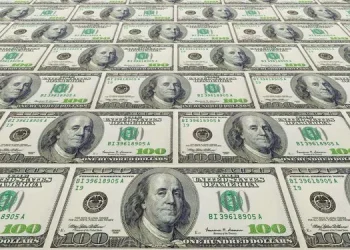The dynamic relationship between the British pound (GBP) and the euro (EUR) is a cornerstone of the European financial landscape. As two major reserve currencies, their exchange rate impacts international trade, investment flows, and the economic well – being of millions across Europe. This article delves deep into the mechanisms, factors, and implications of the pound – to – euro exchange rate, providing a comprehensive understanding for investors, businesses, and enthusiasts alike.
The Basics of the Pound and the Euro
Origins and Historical Background
The pound sterling, often simply referred to as the pound, has a long and storied history. It dates back over 1,200 years, making it one of the world’s oldest currencies. Throughout its history, the pound has played a significant role in international trade, especially during the era of the British Empire when the pound was a dominant global currency.
The euro, on the other hand, is a relatively new currency. Launched in 1999 as an electronic currency, it became physical currency in 2002. The euro was created as part of the European Union’s efforts to foster economic integration among its member states. Today, it is used by 20 out of the 27 EU member states, making it one of the most widely used currencies in the world.
The Role of Each Currency in the Global Economy
The pound is the fourth most – traded currency in the foreign exchange market, after the US dollar, the euro, and the Japanese yen. The UK has a large and diversified economy, with a strong financial services sector centered in London. London is one of the world’s leading financial centers, and the pound’s status is closely tied to the strength of the UK’s financial markets.
The euro is the second most – traded currency globally. It is used in a large economic bloc, with a combined GDP that is comparable to that of the United States. The euro’s use across multiple countries simplifies trade and investment within the eurozone, reducing transaction costs and eliminating exchange rate risks for businesses operating within the region.
Calculating the Pound to Euro Exchange Rate
Exchange Rate Quotations
The pound to euro exchange rate is typically quoted as GBP/EUR. For example, if the exchange rate is 1.15, it means that one pound can be exchanged for 1.15 euros. Exchange rates are constantly changing, and they are quoted in real – time by banks, financial institutions, and online currency exchange platforms.
There are two types of exchange rates: the spot rate and the forward rate. The spot rate is the current exchange rate at which currencies can be bought or sold for immediate delivery. The forward rate, on the other hand, is the exchange rate agreed upon today for a currency transaction that will take place at a future date.
Factors Affecting Exchange Rate Calculations
Supply and demand play a crucial role in determining the exchange rate. If there is a high demand for pounds relative to euros, the value of the pound will increase, and the GBP/EUR exchange rate will rise. Conversely, if there is a higher supply of pounds or a greater demand for euros, the exchange rate will fall.
Interest rates also have a significant impact. Higher interest rates in the UK relative to the eurozone make British assets more attractive to foreign investors. As a result, they will demand more pounds to invest in UK assets, driving up the value of the pound. Central banks in both the UK and the eurozone play a crucial role in setting interest rates.
Macroeconomic Factors Influencing the Pound to Euro Exchange
Economic Growth
Economic growth in the UK and the eurozone has a direct impact on the exchange rate. A stronger economy in the UK, indicated by higher GDP growth, can lead to an increase in the value of the pound. This is because a growing economy attracts foreign investment, increasing the demand for the pound. Similarly, strong economic growth in the eurozone can strengthen the euro relative to the pound.
Inflation Rates
Inflation is another key factor. If the inflation rate in the UK is higher than in the eurozone, the purchasing power of the pound will decline relative to the euro. Central banks use monetary policy tools, such as interest rate adjustments, to control inflation. A central bank may raise interest rates to combat inflation, which can have an impact on the exchange rate.
Political Stability
Political stability is crucial for currency values. In the UK, events such as Brexit had a significant impact on the pound. Uncertainty surrounding the negotiations led to fluctuations in the pound’s value. Similarly, political instability within the eurozone, such as elections or disputes among member states, can affect the euro’s value relative to the pound.
Conclusion
The exchange rate between the pound and the euro is a complex and dynamic phenomenon influenced by a wide range of factors. From the macroeconomic policies of central banks to the trading activities of market participants, every aspect of the economic and financial landscape plays a role in determining the value of these two currencies relative to each other. Understanding these factors is crucial for businesses, investors, and individuals who are involved in cross – border transactions between the UK and the eurozone. By staying informed about the latest economic developments and using the right analytical tools, market participants can better navigate the uncertainties of the foreign exchange market and make more informed decisions. As the global economy continues to evolve, the pound to euro exchange rate will remain a key area of focus for anyone with an interest in international finance.
Related topics:






















